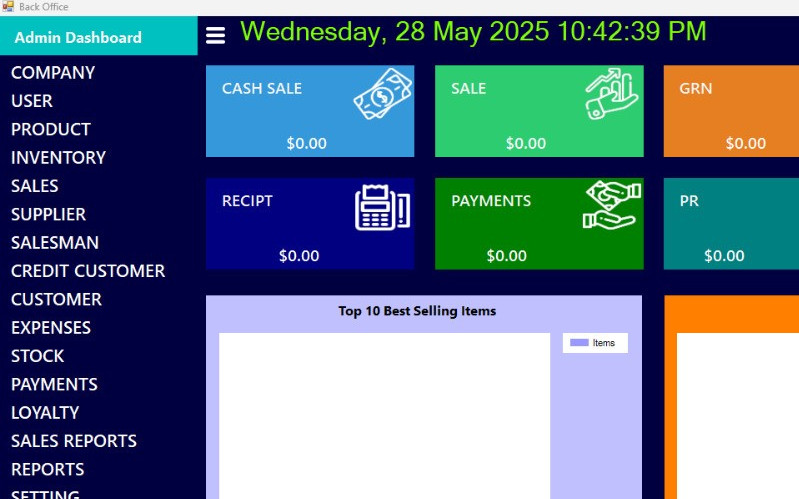Get in your inbox the latest News and Offers from
- Soan Gardens,Islamabad , Pakistan
Point of Sales
Point of Sales
Developing comprehensive Point of Sale (POS) software that covers a wide range of business operations is a substantial task. The best POS software integrates various functionalities to streamline business processes efficiently. Here's a detailed breakdown of the features and capabilities you should include to address the needs you've listed.
Core Features of Comprehensive POS Software
1. Sales Management
Sales Transactions: Record and process sales transactions quickly and accurately, including different payment methods (cash, card, etc.).
Sales Receipts: Generate and print or email receipts for customers.
Discounts and Promotions: Apply discounts, promotional codes, or special pricing on sales.
2. Sales Returns
Return Processing: Handle returns efficiently with the ability to restock items and process refunds or exchanges.
Return Receipts: Provide receipts for returns, reflecting adjustments to the original sale.
3. Purchase Orders (PO)
Order Creation: Create and manage purchase orders to suppliers, including item details, quantities, and prices.
Order Tracking: Track the status of purchase orders from creation to delivery.
Purchase Invoices: Generate and manage invoices related to purchase orders.
4. Quotations
Quotation Creation: Prepare and send quotations to potential customers, detailing itemized prices and terms.
Quotation Tracking: Track the status of quotations and convert them into sales orders if accepted.
5. Goods Receipt Note (GRN)
GRN Management: Record the receipt of goods from suppliers, including quantities and quality checks.
Stock Updates: Automatically update stock levels based on GRN entries.
6. Accounting Reports
Financial Reports: Generate various financial reports such as profit and loss statements, balance sheets, and cash flow statements.
Sales Reports: Detailed sales reports by date, product, category, or salesperson.
Purchase Reports: Track purchases, vendor performance, and expenses.
7. Daily Expenses
Expense Tracking: Record and categorize daily business expenses.
Expense Reports: Generate reports to review and analyze daily expenditures.
8. Fund Transfer
Internal Transfers: Facilitate the transfer of funds between different accounts or branches.
Transfer Records: Maintain records of all internal fund transfers for tracking and reconciliation.
9. Fund Deposits
Deposit Management: Record deposits into business accounts, including details such as amount and source.
Deposit Reports: Generate reports on deposit transactions for financial oversight.
10. Cheque Writing
Cheque Printing: Print cheques directly from the POS system with pre-filled information.
Cheque Management: Track and manage issued cheques, including status and reconciliation.
11. Salesman Management
Salesperson Tracking: Assign sales to individual salespersons and track their performance.
Commission Calculation: Calculate and manage sales commissions based on sales performance.
12. Supplier Management
Supplier Profiles: Maintain detailed profiles for each supplier, including contact information and transaction history.
Supplier Performance: Track supplier performance, order history, and reliability.
13. Customer Management
Customer Profiles: Create and manage profiles for customers, including contact details and purchase history.
Loyalty Programs: Implement and manage customer loyalty programs or rewards.
14. Stock Management
Inventory Tracking: Monitor stock levels, manage stock movements, and update inventory in real-time.
Stock Alerts: Set up alerts for low stock levels or overstock conditions.
Stock Adjustments: Make adjustments to stock levels based on physical counts or discrepancies.
15. Warehouse and Store Management
Multi-location Management: Manage inventory and transactions across multiple warehouses and store locations.
Location-specific Stock Tracking: Track stock levels and movements at each warehouse or store.

